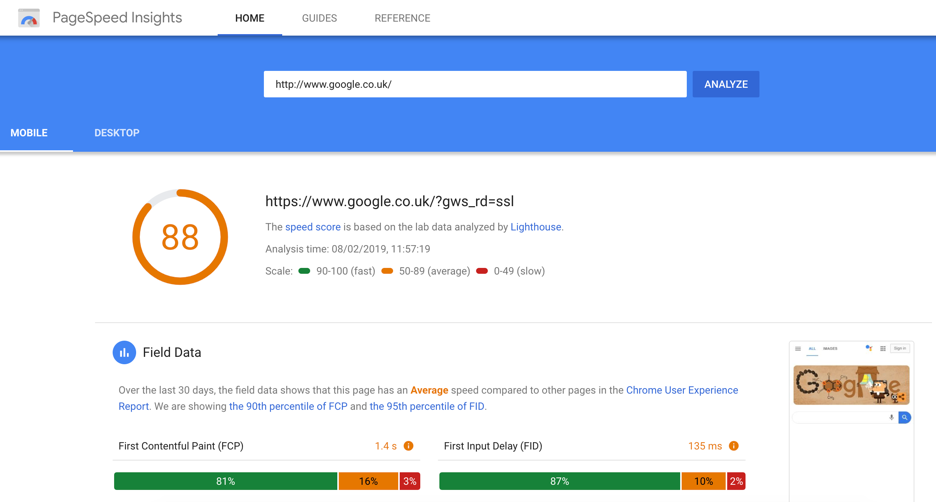The Importance of Page Speed
8th February 2019
A good website is a whole lot more than a nice design. As well as looking the part, it needs to be SECURE, FAST and FUNCTIONAL. This blog post will focus on the FAST.
Why is a FAST website so important?
Firstly and most importantly, people don’t like waiting. Is there anything more frustrating than waiting for an online video to buffer? That same frustration will be felt by customers using a slow website.
A statistic from KISSmetrics says
“40% of people abandon a website that takes more than 3 seconds to load”
Imagine owning a shop, and 40% of your potential customers walking away before they can even get through the front door. Slow websites cause high bounce rates, which in turn leads to poor conversion rates.
Another factor to consider is your positioning in search engine results. On July 9th 2018, Google rolled out a speed update, which confirmed that page speed would be a ranking factor for mobile searches. This means that a webpage which Google classifies as slow could be penalised and appear further down Google search listings. This is especially important when more than 50 percent of search queries globally now come from mobile devices.
How to Measure Speed
Google has a tool called PageSpeed Insights. This takes a webpage URL, and provides a speed score for both mobile and desktop devices. It also provides helpful suggestions on how the page speed can be improved.

What measures do SilverDisc take?
SilverDisc understands the ever-increasing importance of site speed. We ensure all of the sites we launch perform optimally in the Page Insights tool. This ensures that any marketing efforts are fully supported by our sites.
Here are just a few of the actions we perform to improve page speed:
Optimising Site Imagery
Images are responsible for much of a web page's load time. To ensure images have minimal impact on page speed, it is important to resize and optimise images before uploading them to the site. A smaller file size takes less time to load in the browser.
You can reduce an image file size by:
Saving your image with appropriate dimensions - Images are saved with a width and height in pixels. You should aim to match the dimensions of the uploaded image to the dimensions it will display at on your site. A photo taken straight off a camera might have a width of 3,000 pixels, but could be cut down to 200 pixels when uploaded.
Optimising & Compressing the Image - Image compression apps are the easiest way to reduce file size of images. These types of tools remove hidden data in the image file, such as additional color profiles and metadata that aren’t needed. SilverDisc can offer technology which can fully automate this process, and ensure that images across the site are suitably sized.
Caching
SilverDisc ensures that our sites have caching functionality enabled. When a webpage is cached, files and assets that the webpage requires are stored, and can be delivered to the user much faster.
Servers
At SilverDisc we own and configure our own web servers. This allows us to ensure websites hosted on them are fast.
Summary
Website speed is more important than ever, and should be a high priority for any sites you run. If you have a slow loading website, maybe it’s time for change? Get in touch with us and see how we can help.






